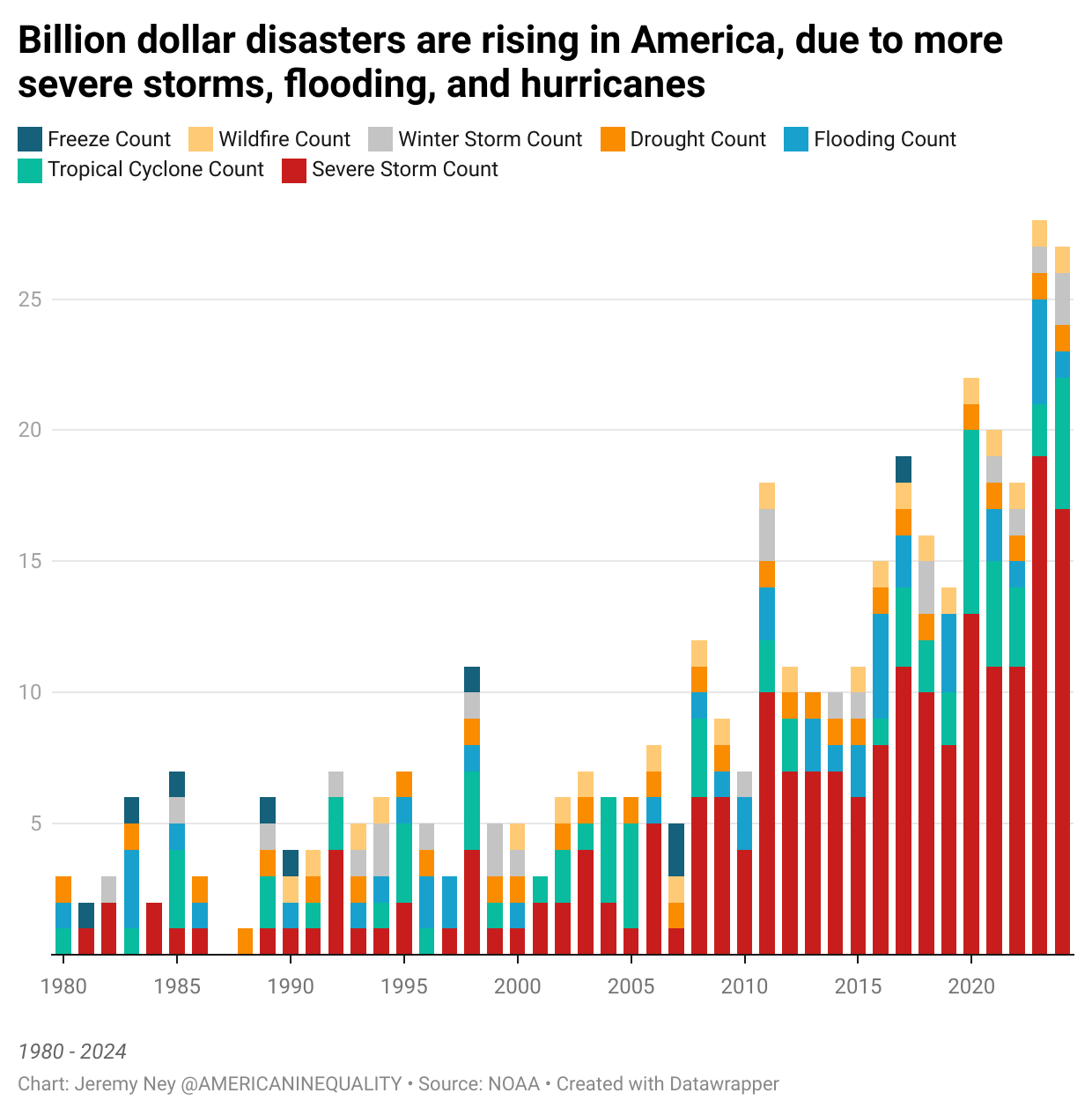TIME Magazine: Natural Disasters and Inequality
Losing NOAA's Natural Disaster Data Will Make Storms More Devastating for the Poor
Read the exclusive piece I published in TIME Magazine today about how more billion-dollar disasters are laying waste to American cities each year, but soon the public will have no idea how bad these damages really are.
On May 8, The National Oceanic and Atmospheric Administration (NOAA) announced that its well-known “billion-dollar weather and climate disasters” database “will be retired.” As part of the Trump administration’s focus on killing programs associated with “climate” this irreproducible source of information for taxpayers, media, and researchers will soon no longer be able to track the devastating cost of natural disasters. But low-income communities—who are at the greatest risk of these disasters—are about to feel the biggest blowback.
The loss of the NOAA data comes at a particularly dangerous time of the year when hurricanes, floods, and wildfires are about to explode. Summer is the worst time for the nation’s deadliest natural disasters. Nearly half of all billion-dollar disasters from 1980-2024 have occurred between May and August according to the NOAA data still available. Severe storms and towering tornadoes killed at least 28 people across the midwest and south from May 17 to May 18. The last tornadoes to cause these types of mass casualties were in 2021, killing 93 people in Missouri, Tennessee, Arkansas, and Kentucky while inflicting $4.5 billion in damages.
It’s a vicious cycle that the most at-risk communities in America—with the lowest incomes, home insurance rates, and test scores—are the ones that get slammed by storms over and over again. In 2020, A team of researchers from Princeton and UCLA analyzed all natural disasters in the U.S. over a 90 year period, combining data from NOAA, The American Red Cross, and FEMA. They looked not just at the state level data, but at the county level to understand what was happening in specific communities. They found that after a natural disaster “the rich move away from disaster-prone areas, while the poor are left behind…showing that these trends may worsen inequality in the U.S.” When those disasters strike again in flood zones, in the paths of hurricanes, and in the line of wildfires, the only people left are the people least prepared to manage the fallout.








The real problem with NOAA’s BDD was methodology. You can follow all of the links here
https://rogerpielkejr.substack.com/p/rip-noaas-billion-dollar-disasters?utm_medium=web&triedRedirect=true
It could very well and to good effect be re-created in a more robust way as RPJ describes.
There’s no benefit to climate action with the use of a PR tool that is so easily critiqued.
Fake news . The Marxists have destroyed any legitimacy the scientific community had by polluting their fields .
A simple look at how hurricanes were supposedly tracked and compared to a time when we tracked hurricanes by looking at the horizon and then tying bogus increases to their favorite cash cow —— climate change .
No hurricanes haven’t increased but YES damages and life losses from natural disasters have plummeted dramatically despite increases in population .
So no.